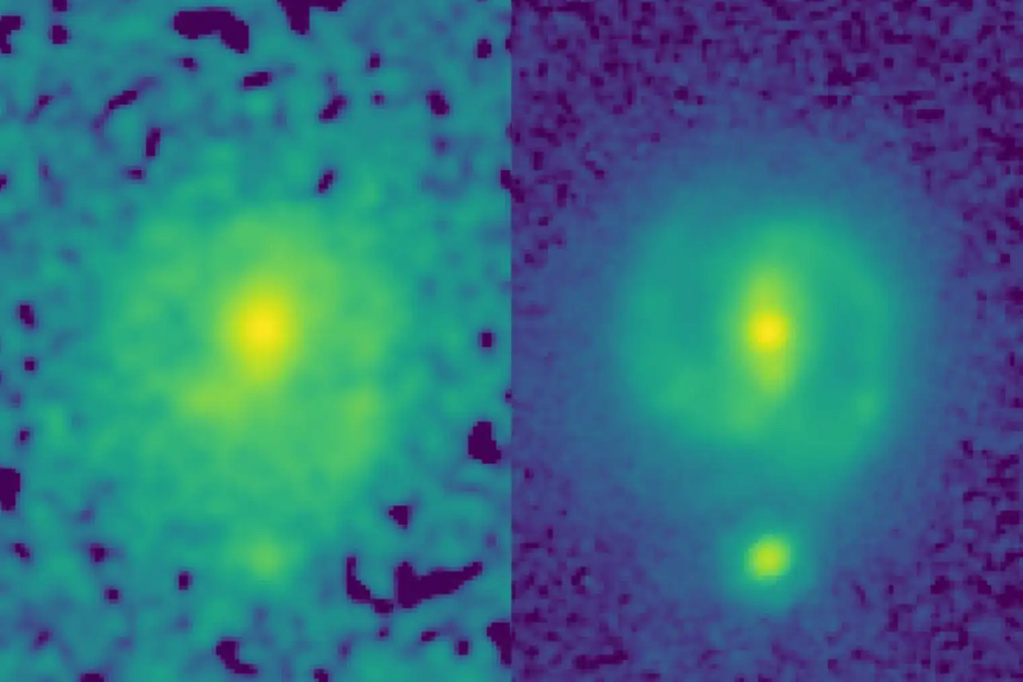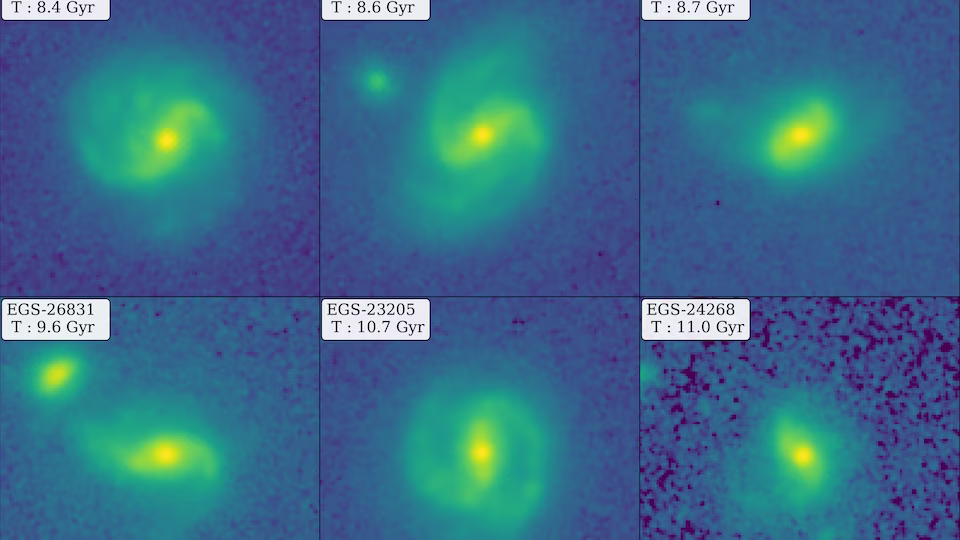The James-Webb reveals galaxies like the Milky Way early in the Universe

With its increased resolving power compared to that of Hubble, the James-Webb pushes the limits of our observations of the world of galaxies. He has just delivered images showing the presence of bars in spiral galaxies, just as in the case of our Milky Way, but sooner than predicted by models of the formation and evolution of galaxies, which will take so revise.
Theastrophysicistsand cosmologists do not just map thecosmosobservable beyond theMilky Waynor to investigate asbotaniststhe variety of celestial objects beyond our Galaxy, they want to understand their functioning, origin and evolution. This is only possible with increasingly powerful theoretical and observational eyes.

We have known for more than a century that we can model the Milky Way and thegalaxieslike thegasself-gravitatingstarsand for this we can mobilize the celestial mechanics ofNewtonto Laplace and Boltzmann's kinetic theory of gases and plasmas to Landau . Perhaps it will finally be necessary to also mobilize the Mond theory , which supposes that the galaxies are not plunged into a halo of particles still unknown in terrestrial laboratories, and indeed to modify the laws ofNewton's mechanics.
TEACHING 2017-2018: DYNAMICS OF GALAXIES: SPIRALS AND BARS, INTERACTIONS AND MERGERS . MONDAY, NOVEMBER 20, 2017 COURSE: STELLAR DYNAMICS: ORBITS AND RESONANCES BY FRANÇOISE COMBES.
Spirals and rods in star gases
However, we have already known for decades that the known laws allow us to explain the diversity of galaxies highlighted in particular byEdwin Hubble, diversity that manifests itself in the form ofelliptical galaxies, lenticulars and spirals in particular and with sub-divisions, e.g.spiral galaxieswhich may or may not have bars. One can read the theories on this subject in the courses ofFrancoise Combesat the Collège de France in the video above.
But all theories must not only rest on a base of observations but also continually pass tests to discover their limits and new territories to conquer. We are just waiting for something newJames Webb Space Telescopethat it allows us to extend our knowledge of the world ofnebulaeof the telescopeHubble. In particular, the James-Webb should help us better understand the origin and early evolution of galaxies between about 300 million years and three billion years after theBig Bang. It could even challenge our theories on the origin of galaxies, for example by refuting the existence of dark matter .
We are not there yet, but the James-Webb has just brought us new elements of reflection in this regard, as shown in a publication in The Astrophysical Journal Letters which can be consulted in open access on arXiv .

MONTAGE OF JWST IMAGES SHOWING SIX EXAMPLES OF BARRED GALAXIES, TWO OF WHICH REPRESENT THE HIGHEST AGES QUANTITATIVELY IDENTIFIED AND CHARACTERIZED TO DATE. THE LABELS AT THE TOP LEFT OF EACH FIGURE SHOW THE AGES OF OBSERVATIONS OF EACH GALAXY, RANGING FROM 8.4 TO 11 BILLION YEARS (GYR), WHEN THE UNIVERSE WAS ONLY 40% TO 20% OF ITS CURRENT AGE. .
Challenges for galactic models
In a press release from the University of Texas at Austin, we learn that the James-Webb gaze revealed the existence ofbarred spiral galaxies like our Milky Way already about 11 billion years ago, such as those named EGS-23205 and EGS-24268.
This is a surprise because before, Hubble could only see a fuzzy disk without really detectable structures and this kind of galaxy so early in the history of the observable cosmos poses questions to models of the genesis and evolution of galaxies . " I took a lookeyeto that data and I said, "We drop everything else!" “said Shardha Jogee, professor of astronomy at the University of Texas at Austin.
Yuchen Kay, a doctoral student who led the team behind the discovery adds in the same press release from the University of Austin: " For this study, we are looking at a new diet where no one had used this type of data or performed this type of quantitative analysis before. So everything is new. It's like entering a forest where no one has ever been. »
Jogee clarifies: “ The bars solve the problem of the supply chain in the galaxies. Just as we must move raw material from the port to inland factories that produce new products, a rod powerfully transports gas into the central region where the gas is rapidly converted into new stars at a rate typically 10 to 100 times faster than in the rest of the galaxy. »

Rods were known to play an important role in the evolution of galaxies by channeling gas into central regions, stimulating star formation. At the same time, the bars also contribute to the growth ofsupermassive black holesat the center of the galaxies by channeling the gas in part.
But, according to the researchers, the existence of these bars so early upsets the evolution scenarios of galaxies in several ways and above all it was not planned theoretically. New theoretical models will have to be developed and tested, for example withnumerical simulationslike those already conducted with Frontera, one of thesupercalculateursthe most powerful in the world and available to the Texas Advanced Computing Center (TACC) in the United States.
THIS SIMULATION SHOWS BOTH HOW STELLAR BARS FORM (LEFT) AND THE GAS INFLOWS DRIVEN BY THE BARS (RIGHT). STELLAR BARS PLAY AN IMPORTANT ROLE IN GALAXY EVOLUTION BY CHANNELING GAS INTO THE CENTRAL REGIONS OF A GALAXY, WHERE IT IS RAPIDLY CONVERTED INTO NEW STARS.
Source:websites

